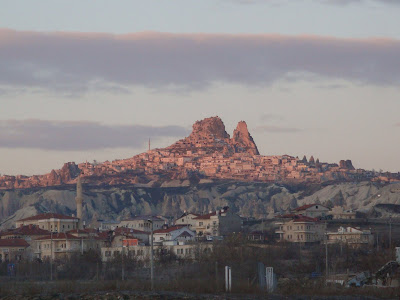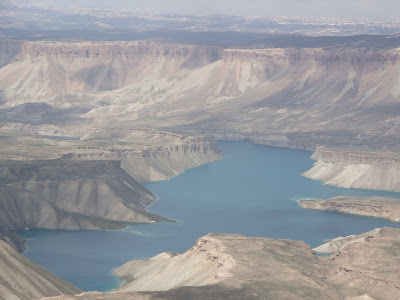April 7, 2009. I’m still in disbelief as to how quickly time is flying. Ten months have passed since I came to Kabul on assignment, and I’ve just returned from a most amazing R&R in Turkey with my very good friends, Vivek and Sherin from Washington, DC. Nearly every moment of our two weeks spent primarily along the Western coastline, we indulged in the rich history, culture, and dynamism of life in the former great Ottoman Empire.
I arrived a few days earlier than Vivek and Sherin and decided to fly directly from Istanbul to Kayseri to visit the famous Cappadocia region, renowned for its unusual lunar landscape. I stayed in one of its many cave hotels, something very unique to its tourism industry. On my way from the airport, I met another lone Colombian traveler who was also coincidentally staying at the same hotel. We were both warmly met at the Gamirasu Cave Hotel by Hamida, one of the friendliest, warmest individuals I’ve come across in a long time. Before hitting the sack after a full day’s travel, I played translator between the Colombian and Hamida, and I have to admit that I was pleasantly surprised by the amount of Spanish that suddenly came to my assistance in that moment.
The following morning, I began my tour with a young group of Americans to Kaymakli Underground City, one of several underground settlements. We followed that with some hiking in Soganli Valley, which is full of rock cut churches rich with frescoes, surrounded by table top mountains. The landscape is incredibly unique in that it is largely underlain by sedimentary rocks formed in lakes and streams and ignimbrite deposits erupted from ancient volcanoes approximately three to nine million years ago. The rocks of Cappadocia eroded into hundreds of pillars and minaret-like forms. The volcanic deposits are soft rocks that people have carved out to form some of the most amazing houses, churches and monasteries-cum-madrassas, full of frescoes painted with very resilient vegetable dyes. We visited a newly discovered archaeological excavation site of mosaic houses in Sahinefende-Sobessos before heading to Cemil, an old Turkish town settled by the Selcuk Turks at one point. After finishing off the tour in the small Greek town of Mustafapasa, I arranged to observe a Sufi prayer session.
On my second and last day in Cappadocia, I was the lone traveler with our tour guide from yesterday, Mustafa, and our driver whom we called Hajji Sahib, as he had just returned from Hajj in Mecca. The day started at 5:00 am to sail over the lunar landscape in a hot air balloon, which I highly recommend to anyone planning to make this visit. The views of the rock formations in Devrent Valley and Uchisar are breathtaking! After a good, hot breakfast, we visited the Pasabag fairy chimneys, “where the voice of wind mixes with the song of fairies.” We stopped for lunch in Avanos, known for its terra cotta work of art dating as far back as 3000 BC. The pottery is spectacular, and though I’m sure very over-priced, I couldn’t resist buying enough of it to require a shipment back to the States, only to be stored with the rest of my worldly possessions at Amma and Appa’s house.
Vivek and Sherin had, by now, arrived in Istanbul, and it was time to make my way back to the city where East truly meets West.




































































